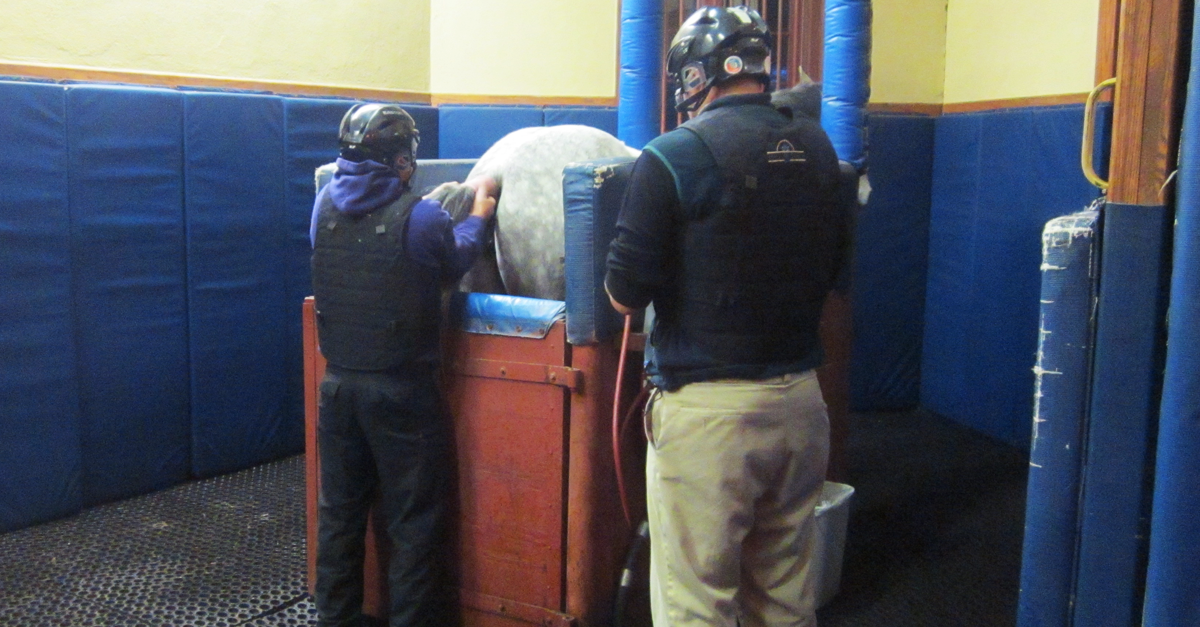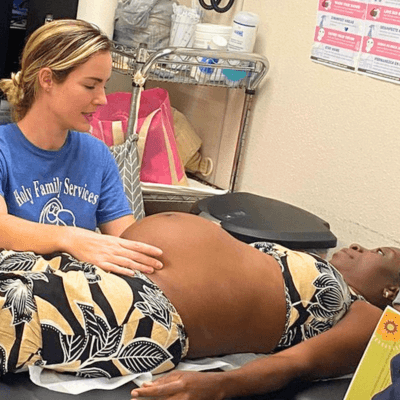Occupational Safety On the Horse Farm
 There are pockets of workers all over the country who don’t fall into the typical agricultural worker definition. Dairy workers, for example, are often left out of regulations for agricultural workers; Migrant Clinicians Network has responded with outreach and resources specifically for that population.
There are pockets of workers all over the country who don’t fall into the typical agricultural worker definition. Dairy workers, for example, are often left out of regulations for agricultural workers; Migrant Clinicians Network has responded with outreach and resources specifically for that population.
Here’s another pocket of workers who don’t easily fit in the established categories: workers on thoroughbred horse farms.
“In Kentucky, one of the three largest industries is the thoroughbred industry, which includes businesses that breed, raise, sell, and race thoroughbred horses,” noted Jennifer Swanberg, PhD, professor at University of Maryland School of Social Work and principal investigator of the Latino Thoroughbred Farm Worker Health and Safety Study. The thoroughbred farm workforce, say the researchers, is largely understudied and is increasingly comprised of immigrant Latino workers.
In 2009, Dr. Swanberg’s Institute for Workplace Innovation, which aimed to improve the quality of workplaces in Kentucky, decided to conduct a pilot study exploring health and safety issues for workers on crop and horse farms. They enlisted Jessica Clouser, MPH, from the University of Kentucky College of Public Health and now project manager and co-principal investigator of the thoroughbred study, to interview Latino agricultural workers to determine what types of health and safety issues they may be encountering. At first, the researchers targeted workers on both thoroughbred horse farms and crop farms; eventually they narrowed their focus to just the horse farms.
“Our study results indicated that workers in the horse industry were exposed to aspects of the work environment that increased their risk to injury,” Dr. Swanberg said. The researchers discovered that workers experienced injuries as a result of working with large animals and had heightened respiratory issues. Additionally, as farm managers turn to immigrant labor for help, “it’s creating management challenges, [as a result of] the cultural and language barriers,” noted Clouser. “The industry is strongly dependent on this worker group,” Clouser said, but the study demonstrated that “the industry is experiencing challenges and [industry leaders] want help in overcoming them.” The study also found that the quality of relationship with the supervisor mattered in the level of risk for the worker, added Clouser.
 “Results from this initial pilot study informed the development of a much larger study that would systematically examine the occupational safety and health issues of Latinos on thoroughbred horse farms,” Dr. Swanberg said. The resulting five-year study, just entering its final year, is funded by the CDC’s National Institute of Occupational Safety and Health and works to engage the farm to impact farmworker health. The researchers used two advisory councils to guide the process, one with representatives from the industry and one with members of the Latino community and the outreach partners and service providers who serve it. The study’s output is extensive. When Clouser asked farm managers what they wanted from they study, they asked for the findings of the research, a better understanding of what other farms are doing, and more tools and resources to assist their farmworkers. Consequently, three major categories of tools are being developed:
“Results from this initial pilot study informed the development of a much larger study that would systematically examine the occupational safety and health issues of Latinos on thoroughbred horse farms,” Dr. Swanberg said. The resulting five-year study, just entering its final year, is funded by the CDC’s National Institute of Occupational Safety and Health and works to engage the farm to impact farmworker health. The researchers used two advisory councils to guide the process, one with representatives from the industry and one with members of the Latino community and the outreach partners and service providers who serve it. The study’s output is extensive. When Clouser asked farm managers what they wanted from they study, they asked for the findings of the research, a better understanding of what other farms are doing, and more tools and resources to assist their farmworkers. Consequently, three major categories of tools are being developed:
Research briefs. As the findings of the research came out, the group provided research briefs both to farm managers and to outreach and service providers who work with Latino workers, to disseminate what the research is revealing, including information on the types of injuries that occur on horse farms and the circumstances of those injuries. Many of the research briefs are already available online and several more will be released in the coming year.
Promising practices reports. From the in-depth interviews conducted with thoroughbred farm managers, the researchers are developing a report sharing practices employed by farms to address both health and safety and management issues. These will be distributed to farm management. Thirty-two farms participated in the survey, and 26 of them continued on to complete an “in-depth interview that lasted between one and four hours,” covering a wide range of questions about their operations, their workforce, and the injuries they’ve seen, Clouser noted, to fill out a full picture of their operations. “One farm enacted safety teams,” said Clouser, “They have safety meetings [where] they’ll have a representative from each division across the farm,” and from each level of the farm, from workers in a non-supervisory position to farm managers. “They meet quarterly and they discuss issues that they’ve found regarding safety on the farm,” she explained. The group reviews injury reports and assigns an underlying cause and underlying prevention strategy, she said, and they work to change farm policy if needed. These promising practices reports will be disseminated to farms in the region, and they will be available on their website.
Graphic safety materials. The researchers are assembling a working group consisting of farm managers, a human resources manager from a local thoroughbred farm, and workers’ compensation and insurance representatives to begin developing low-literacy and bilingual materials on health and safety for workers on horse farms. These pieces will be developed in this final year of the project and will also be available on the website.
Community involvement has been key. “This project was very focused on community participatory principles,” Clouser emphasized. “We worked really hard to get both industry and organizational representation of people who are concerned about the workers themselves, and the health of Latinos.” Swanberg added, “When I step back to see what’s unique and has been successful about this project, it’s that we’ve been able to work with both sets of communities and both have been equally as valuable in the success of this project.”
Learn more about the Thoroughbred Worker Health and Safety Study at their website, www.workersafetyandhealth.com.
Return to the main blog page or sign up for blog updates here.
- Log in to post comments






